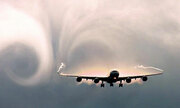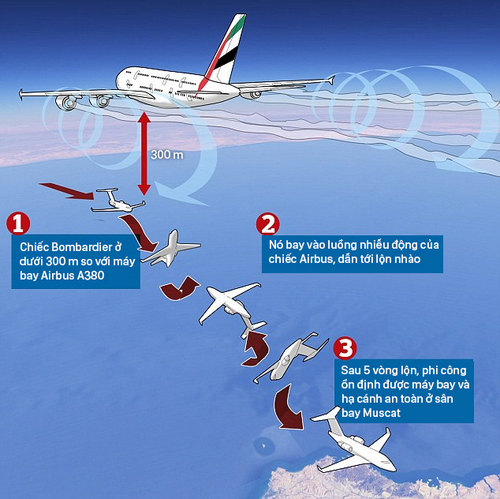The reason for the flight may be bumpy
Air turbulence, whether or not the plane crashed in the sky but still bumped into the pothole is a question many passengers wonder.
Passengers on the plane all experience air turbulence. This causes the aircraft to shock, shake, shake or even fall for a short time. Although this objective incident often happens on flights, not every flight you encounter.
So what is turbulence? Is it really dangerous? Why is this flight more bumpy than others, even in the same leg? Here is an answer from Sun about this phenomenon.

What causes turbulence during flights?
Turbulence is, in essence, a change in air that can shake an airplane in the sky. A flight may experience turbulence many times, or not at all. There are many types of disturbances that can occur during a flight, from "clear sky turbulence" (CAT) to "air turbulence" (Wake Turbulence).
Disturbance in the skies is a chaotic movement of air in clear skies. This usually happens when the aircraft travels from an area with fast-flowing winds to a slow-moving area or vice versa. This is also the most common type of disturbance.
Usually pilots will try to avoid these areas (if they are flying into an upwind) or use them (if flying in a downwind) to reduce fuel use.
Air turbulence arising from whirlwinds. Giant aircraft such as the A380 often cause huge turbulence when flying overhead, and those that fly lower than it will be affected. A typical example of this disturbance is that on March 22, 2017, the Bombardier Challenger 604 crashed more than 3,000 meters and nearly crashed into the turbulent air flow of an Airbus A380 aircraft above. , causing it to lose complete control.

Artwork of the incident with the Bombardier Challenger. Graphics: Times.
So is this perturbation dangerous?
Answering on Ask the pilot, the pilot and author of the Cockpit Confidential book Patrick Smith said the turbulence is relatively common and often harmless. It gives passengers an unpleasant experience, but does not drop the plane. Sometimes when you go into turbulence, you see the plane is falling freely or wobbling. However, in reality, your aircraft is still completely safe.
Typically, the plane will vibrate, shaking like a car going into potholes on the road. Worse case, many passengers or flight attendants were thrown to the ceiling by not wearing a seatbelt and getting injured. That is why the flight attendants always ask passengers to wear seat belts, sit in the seats when going through disturbed areas as well as during the flight, except when using the toilet.
How do pilots deal with turbulence?
CAT is neither visible to the naked eye nor detectable on radar. So pilots will often rely on reports from other aircraft. Most of the time, the aircraft can withstand any turbulence. Even so, pilots will always turn on the signal to require seat belts with passengers.
The pilot's first goal is the comfort of the passengers. As a result, they will often slow down or try to avoid any windpipe: try to fly higher (if the plane allows it), or lower (but this also causes the aircraft to burn more fuel. and may cause the aircraft to be in a worse state). The pilot may choose to fly straight into the disturbed area, but at a slower pace than usual. Most captains will try to avoid disturbed areas such as near a thunderstorm.
Where do you sit on the plane to be least affected?
Patrick said that the quietest sitting position is the wing. The most shocking part is usually the last row, near the tail of the aircraft.
FIDITOUR TRAVEL COMMUNICATION COMPANY
Representative: Mr. Tran Van Long - Chairman and General Director
Head office: 95B-97-99 Tran Hung Dao, District 1, City. Ho Chi Minh.
Hanoi Branch: 66 Tran Hung Dao, Hoan Kiem District, Hanoi
Phone: 028 730 56789 | Hotline: 19001177